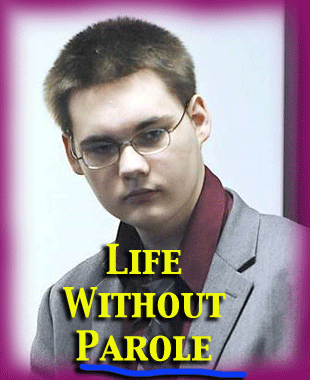Once again in California, those in the state with any kind of experience and/or knowledge of juvenile justice, are trying to persuade California lawmakers to please, please, please pass a law that gives kids sentenced to prison for life a chance—just a chance, no kind of guarantee—to one day make the case that they are worthy of parole.
So far, as was true last year and the year before, nearly all the Republicans and far too many spineless Democrats, are unwilling to pass the thing. Thus SB9—as the bill is numbered—still is a few votes shy of being able to pass.
And while advocates are not giving up, the fact that our supposedly liberal state cannot pass this watered down bill is discouraging.
As I’ve stated here a zillion times, the United States is the only country in the world that puts kids in prison for life without parole—LWOP. The only one. Really. Nobody else does it. Nobody.
And….as that battle goes on in Sacramento, it is instructive to read this investigation by three reporters from the New England Center for Investigative Reporting about the discrepancy in sentencing in Massachusetts for juvenile murders. It is likely that California could use such an investigation.
Read the whole thing, but here’s how it opens:
Shrewsbury teen Valerie N. Hall pushed her mother down a flight of stairs in 2000, smashed her head in with a hammer and left Kathleen Thompsen Hall to die while she went for a ride with her boyfriend. For her mother’s murder, Hall, a depressed and suicidal 16-year-old at the time, served nine years in prison.
Lincoln-Sudbury Regional High School student John Odgren, who suffers from depression and other mental ailments, fatally stabbed schoolmate James Alenson in the boy’s bathroom in 2007 when he was 16, and after realizing what he had done, tried to get help. Odgren is serving life without the possibility of parole at Bridgewater State Hospital.
Both crimes were ghastly. Both teens suffered from mental illness. Both were charged with first-degree murder.
But their punishments could not have been more different.
The dispositions of the Hall and Odgren cases illustrate the profound inequities that have grown up in the Massachusetts juvenile justice system since the passage of a tough sentencing law enacted 15 years ago and designed to punish the most depraved “super-predators” among teen killers.
An investigation by the New England Center for Investigative Reporting reveals, for the first time, that that law is not being applied consistently to the most horrific juvenile murder cases, as it was intended. The findings come as the U.S. Supreme Court prepares this spring to tackle whether it is “cruel and unusual” punishment to sentence juveniles 14 and under to life without parole for murder.
As the investigation points out, even law-and-order Texas has repealed life without parole for juveniles. But not Massachusetts…..and not California.
AND WHILE WE’RE ON THE TOPIC—SOME WISE WORDS ABOUT CALIFORNIA’S JUVENILE PRISONS FROM JAMES BELL
Juvenile crime reached an all time low in California in 2010.
For this and other reasons, Jerry Brown wants to shut down the state’s incarceration facilities for kids by 2014, and move all of those juveniles to camps or other facilities at a county level.
Most of the juvenile justice experts I know see this idea as a damned if you do, damned if you don’t proposition.
On one hand the facilities we used to call CYA (California Youth Authority), that we now call DJJ (Department of Juvenile Justice) are lousy places, where kids don’t get what they need. What is more they’re insanely expensive to run.
On the other hand, some of the kids sent to DJJ are mentally ill and very difficult to handle. To toss them into, say, Los Angeles County’s already troubled probation camps, would be difficult.
James Bell, the founder and executive director of the W. Haywood Burns Institute, talks to KALW News about whether or not it’s practical or not for the young people in DJJ to be brought back to their home counties.
Here’s a couple of clips from the transcript for the broadcast:
The whole point of juvenile justice system is to make sure that we do some habilitation and some rehabilitation, so that you won’t go on to be an adult chronic offender. You are supposed to be there to be getting needs addressed that you have expressed as a juvenile, as a young person. Essentially, this was the place where it was guards in a pod, hundreds of young people in dorms, and if anything happens the guards would throw tear gas left, throw tear gas right, and call for backup or the SWAT team. So, you would have to declare a gang affiliation to be protected. It was just horrible!
There was no real interactive model between the young people and the people that were supposed to be serving them. So it just became custody and control. And as we know, there were beatings, there were deaths. There were absurd instances where kids with special education needs were supposed to get education but the facilities people thought they were too dangerous. So your classroom was just cage! Literally, you can imagine the absurdity that has to happen when you are non-interactive and you go to custody and control. That’s what it was.
KERNAN: Now the call is to shut down the DJJ altogether. Why is that happening now do you think?
BELL: There have been calls to shut down these facilities for many, many years. And the reasons were what we’ve just talked about: Treatment wasn’t right, it was extremely expensive for that kind of treatment. Recidivism rates were crazy – between 60-70% range. It was like, why are we doing this? But those arguments had no salience because of fear, the way politicians frame public safety… it just got no traction. Literally, the state’s fiscal crisis is the reason because folks are looking at why shouldn’t we do something differently.
Now in fairness, the populations were going down and I believe that’s because the locals were beginning to see that sending their young people away to the Youth Authority as it was then, wasn’t productive, wasn’t helpful. And so there is a movement out there in the youth justice field to look at rational policies, to become less anecdotal, more based on data and objective screens and probation violation grids and those kinds of things. That resulted in less counties sending their people anyway.
And you could really see a north-south split. Southern California being the one that are most sending, and northern California sending least….
Read or listen to the rest. Bell is very good at laying things out.
DEAR CALIFORNIA, I KNOW WE NEED MONEY, BUT PLEASE DON’T SELL OUR PRISONS TO THOSE SMILING GUYS WITH THE BAGS FULL OF MONEY
Chris Kirkham, writing for the Huffington Post has the story (actually two stories) on this new and alarming trend that brings with it a moral conundrum: If prisons become privatized is there not a budget incentive for prison inc. to get or keep customers?
In any case, here’s how Kirkhan opens his story:
As state governments wrestle with massive budget shortfalls, a Wall Street giant is offering a solution: cash in exchange for state property. Prisons, to be exact.
Corrections Corporation of America, the nation’s largest operator of for-profit prisons, has sent letters recently to 48 states offering to buy up their prisons as a remedy for “challenging corrections budgets.” In exchange, the company is asking for a 20-year management contract, plus an assurance that the prison would remain at least 90 percent full, according to a copy of the letter obtained by The Huffington Post.
The move reflects a significant shift in strategy for the private prison industry, which until now has expanded by building prisons of its own or managing state-controlled prisons. It also represents an unprecedented bid for more control of state prison systems.
Corrections Corporation has been a swiftly growing business, with revenues expanding more than fivefold since the mid-1990s. The company capitalized on the expansion of state prison systems in the ’80s and ’90s at the height of the so-called ‘war on drugs,’ contracting with state governments to build or manage new prisons to house an influx of drug offenders. During the past 10 years, it has found new opportunity in the business of locking up undocumented immigrants, as the federal government has contracted with private companies in an aggressive immigrant-detention campaign.
And Corrections Corporation’s offer of $250 million toward purchasing existing state prisons is yet another avenue for potential growth. The company has billed the “corrections investment initiative” as a convenient option for states in need of fresh revenue streams: The state benefits from a one-time infusion of cash, while the prison corporation wins a new long-term contract. a businessl
Kirkham also reports that the state of Florida just narrowly escaped selling a bunch of it’s prison facilities to a large prison corp.



Token non-LASD-related post. 🙂
Celeste, while there may be some similar aspects to the juvenile cases, there could be significant differences in the murderers’ mental states, feelings of remorse, ability to change, etc. The judge and jurors had more information to make those judgments. According to your post, the girl served her time in prison, but the boy is in a mental hospital, which indicates a more serious issue with his ability to rejoin society.
Concerning your supporting point that some sentences are wrong because the U.S. does something within its justice system not found in other coutries, consider that our justice system is also unique with its Bill of Rights. Being alone on an issue doesn’t mean that you’re wrong.
10-33 Go, you got me. And I’ll have more token posts tomorrow. I hope no one else sees through my ruse.
Woody, the back story on the Odgren boy is that he’d struggled with mental illness for a long time, was repeatedly bullied, and went off the rails. Even more tragically, the kid he killed was an entire innocent, well-liked, and not at all one of the kids who’d been bullying the murdering kid.
But that should not have added up to a first degree murder conviction in an adult court. He should be in a mental facility getting treatment, and with a sentence. But not locked up for life with no chance for reexamination—not with his age and history.
I too am proud of the Bill of Rights. But, as someone who looks over many, many of these cases, our LWOP policy for kids—who can’t vote, can’t go to racy movies, can’t sign a contract, drink or smoke—is not an American singularity I’m proud of.
Basically, this reflects a nation wide apathy and lack of courage on the part of those passing out these sentences because they are failing to recognise clinical evidence that is overwhelmingly in favor of the ability of these kids to change given the proper intervention.
Celeste,
This is the type of story where true change can hopefully be made by the awareness of how these children are being dealt with. Thank you for bringing these discrepancies to light in such a forum. Keep up the good work. While the LASD stories are salacious, they all have a Peyton Place vibe.
Hey, 10-33-Go, got your note. And, I completely understood that your comment was a gentle joke and a play on that earlier comment—which I entirely enjoyed. I was simply joking back, I promise. (Note to self: comedy routine needs work.)